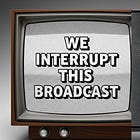The Infrastructure That Built Public Media Won't Save It
With CPB gone and audiences moving on, survival depends on the one thing the system has always resisted: real, relentless experimentation.

NOTE: As you know, I typically publish my work at 8am. This piece—which is something I’ve been thinking about over the past few weeks as I’ve spoken with a variety of leaders in public media as well as funders and general staff members—took longer to come to terms with and, as a result, you’re getting it with your dinner. I apologize and hope you will give it as much consideration as you do my morning releases. I can’t wait to read your thoughts.
Let’s be honest. Public media is in a world of hurt. It’s not just one thing, but a perfect storm hitting from every angle. You have the collapsing financial model. Federal funding has been eliminated, and the Corporation for Public Broadcasting is shutting down after nearly 60 years. At the exact same time, there’s an audience crisis. Former Oregon Public Broadcasting head Steve Bass identifies this as the core “existential challenge.” The old playbook simply isn’t connecting with the younger, more diverse communities it needs to survive. Why? Because they’ve already moved from broadcast to on-demand. All of this is happening on the shifting ground of technological upheaval that changes the rules of the game almost daily.
So how does an institution as vital as public media navigate that perfect storm? The answer isn’t doubling down on the playbook of old. It’s embracing something public media has historically been allergic to—real, full-court-press, relentless experimentation.
The Pattern of Hesitation
Look, there were moments. NPR was an experiment in itself. This American Life did the same for radio storytelling in the 90s. Stations in the early 2000s were really pushing the envelope around digital, social media, and new kinds of engagement. Some of this work was actually cutting-edge.
But for every innovation, there were also costly stumbles. Stations in the 90s largely treated the web as a glorified bulletin board while newspapers around them were busy building their digital empires. When podcasting hit, the system was slow to make common cause around the very format it had pioneered. Stations got fiefdom-protective over broadcast slots even as Serial made the case you didn’t need a station to make great public radio. Public media was a late adopter of platform distribution. It was slow on YouTube, skittish on Spotify, fighting over issues of brand control and curation while audiences had already left.
This bred a reputation for being risk-averse, overly cautious, slow to pivot, the very opposite of what innovation requires. The innovation that did happen happened on the margins. It happened on individual shows, scrappy stations, by people working around the system, not because of it. And to be honest, some of that experimentation even had support from the CPB, the institution that is now being put out of its misery, even as the larger system fought the change.
By the 2010s, there was lots of talk of innovation. Endless conferences. Lab initiatives. Generous funder support for experiments. But not always much follow-through. Sometimes things would work in one place but never scale because the system just wasn’t designed to support them.
Were there moments of real experimentation? Yes. Did we have a culture defined by it? Not really.
But it has to. It has to start. And it has to start now.
What Real Experimentation Looks Like
Real experimentation is more than just pilot programs and innovation labs. It’s rethinking partnerships and working with organizations and creators outside the “system.” It’s building ideas and formats that aren’t bound to TV antennas and car radios. It’s giving people the permission to fail, learn, and move fast. The infrastructure that built public media won’t be what saves it.
There are glimmers of hope. Some organizations are already out there doing this work. And, look, they’re showing it can work.
KVIE in Sacramento built a digital-first newsroom from the ground up. It’s launched Abridged to cover local news and serve under-covered communities where commercial media had already given up. KQED built Ask Forum, an AI-powered tool that makes decades of programming searchable in plain language. It turns a static archive into a useful, conversational resource.
This is not tweaking existing programs. This is rethinking fundamentals about what public media can be and who it serves.
But here’s the problem. This work is not well known system-wide. If innovation remains siloed in a few well-resourced stations, it doesn’t matter. Public media needs to embrace a culture of sharing. Open documentation. Cross-station collaboration. A real commitment to making things that work reproducible.
What a Culture of Experimentation Actually Requires
New metrics that matter beyond broadcast reach
For decades, public media has been gauging success in broadcast ratings and pledge drive totals. It won’t cut it anymore. Stations need to track and understand whether and how their journalism is building trust and having impact. Tools like API’s Impact and Trust Platform tell you whether your sourcing matches the community you serve. It tells you whether your work is having an impact that actually matters (not just pageviews) like sign-ups, donations, and loyalty. If you can’t prove your journalism matters to the people you serve, you can’t make the case that it should survive.
Partnerships beyond the public media ecosystem
Experimentation means working with organizations and creators that don’t look like traditional public media partners. Digital-native news startups. Independent creators. Trusted community voices. Local influencers who may only have 500 followers on social media but whose posts about school board meetings actually move people to show up and take action. These are not dilutions of mission. They are extensions of it. They put trusted journalism into networks that already have community credibility.
Permission to fail and product mindset to guide it
Experimentation is not just a slogan. It requires boards that are willing to tap reserves for strategic bets (as KVIE did with Abridged). But it also requires thinking about every initiative with a product mindset. Build small pilots. Measure what actually works. Iterate on user feedback not gut feelings. Stop launching perfect, bloated programs and test small, learn what doesn’t work, refine, and repeat. Most of all, it requires creating a culture where you value trying something bold and learning from the failure more than playing it safe and being a statue.
Open sharing across the system
Innovation that’s siloed doesn’t scale. Public media has to commit to documenting what works and what doesn’t. It has to be done openly. Accessibly. In formats other stations can actually use. If KVIE figures out local news, if KQED cracks AI-assisted discovery, that information has to spread. The system’s strength has always been its collaboration. Now it has to commit to the same spirit of sharing with experimentation.
So What Now?
This isn’t a time to go all-in or swing for the fences with every initiative. It’s a time for smart strategic bets. The kind KVIE made when they tapped reserves to build Abridged, or KQED made when they invested in making their archive searchable through AI.
But here’s what’s just as important. Don’t do this alone. Find people and organizations to help you navigate the transition. Partners who’ve been through it, who have tools and frameworks that work, and who can help you move faster and smarter.
My organization, API, is built for exactly this moment. We’re helping newsrooms use tools like the Impact and Trust Platform to prove their journalism’s value. We’re also helping them access free playbooks on building community engagement. We want to be one of those partners that help you move faster and smarter.
But whoever your partners are, find them. Build with them. Share what you learn.
Public media’s survival won’t come from doing more of what used to work. It will come from stations that are willing to experiment, iterate, and learn alongside each other. The infrastructure that built public media won’t be what saves it. What saves it is what you build next.
What do you think? Is public media moving fast enough? Share your thoughts, critiques, and your own examples of innovation in the comments below.
P.S. - If you found this post helpful, would you please consider restacking it and sharing it with your audience?
This spreads the word and keeps me writing the types of content that you have enjoyed.





